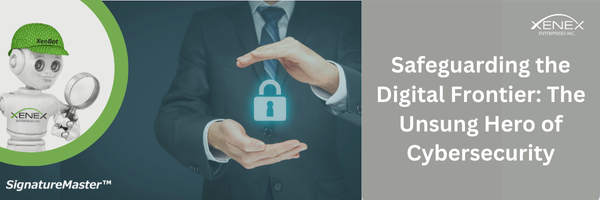In today's interconnected world, where digital transactions and communications have become the norm, the importance of security cannot be overstated. At the forefront of this digital security landscape stands a powerful tool: the digital signature. Far more than just an electronic version of a handwritten signature, digital signatures play a crucial role in ensuring the authenticity, integrity, and non-repudiation of digital documents and transactions.
In the previous article, we talked about the factors that should be taken into consideration when choosing a digital signature solution. Organizations should consider the following:
- Legality: Will it hold up in court? (Because let's face it, sometimes business gets messy)
- Security: Fort Knox-level protection for your John Hancock
- Identifying identity: Who signed this? And did they have the authority to do so?
- Scalability: Because your business is going places, and your signature needs to keep up
- Agility: Easy enough for your tech-phobic CEO to use without adding extra tasks for you.
- Ease of integration: Plays nice with your existing tech stack
They’re important factors but I think you agree with me in terms of “Security” being the most important one since without it, none of the other factors will matter. Let's face it, the documents we're signing contain sensitive information. That's why it's of utmost importance to have strong security measures.
According to Canadian law and under the “Personal Information Protection and Electronic Documents Act (PIPEDA)” and the “Secure Electronic Signature Regulations”, a secure electronic signature must meet the following criteria:
- The signature must be uniquely linked to the signatory (Authentication).
- It must be created under the signatory's sole control (non-repudiation).
- Any subsequent changes to the signed document must be detectable (Integrity).
- The signature must use regulated asymmetric cryptography or equivalents
Furthermore, the secure electronic signature must be issued by a Certification Authority recognized by the Treasury Board of Canada Secretariat, which verifies the CA's capacity to issue digital signature certificates securely and reliably. In other words, you must make sure that the Signatory has control over the signing process, the document hasn’t been tampered with, and you can identify who has signed the document. Therefore, when choosing the solution, you must pay attention to the following questions:
- How can we be sure who signed it?
- Was the signatory duly authorized to bind the organization?
- Does the document bear the organization's authentic and authorized corporate seal?
- Was the individual who applied the seal duly authorized by the organization to execute action?
- Can we tell where or when it was signed? (Timestamps and location data)
- Is it compliant with my industry standards?
- Is the document encrypted or encoded?
- Is it based on the rules and regulations defined by higher authorities?
- Does it ensure future interoperability with other providers' verification tools?
Remember, a good digital signature system should make it easy to verify signatures, even if you're using a different provider's tools down the road. It's all about keeping things secure, but also flexible for the future!
These are important questions, especially when you’re dealing with businesses. Neglecting some aspects of it can create huge and costly legal disputes for you and your organization.
Stay tuned for the next blog since we’re going to delve into technologies that will transform the future of digital signature world.


Leave Comment